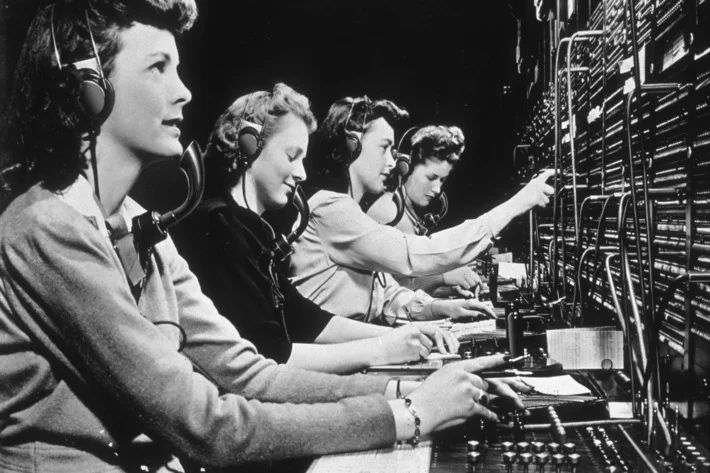A survey highlights the need for managers to build strong connections to those who work from home or elsewhere off-site.
6 Important Reasons Why Working from Home Is Improving Organisations
Companies, government agencies, news outlets, and academics are all trying to understand the work from home phenomenon that has boomed in recent years.
7 Incredible Home Offices of Designers and Architects
Creativity stems from a balance of work and life, connectivity and retreat, conversation and solitude.
Karim Rashid Designed a Collection with Lamborghini and Riva 1920
Karim Rashid created a collection in collaboration with Lamborghini by Riva 1920. Entitled Authentic Living, the collection includes five pieces of furniture crafted with high-quality materials like solid walnut wood and buttery black leather. Karim designed the collection by heavily drawing on the design aesthetics and philosophy of Riva 1920 and Lamborghini: sinuous curves, sharp lines, state of the art technology, and attention to the smallest of details that are often unexpected and make the design.
8 Standing Desks That Will Have You Ditching Your Chair
It’s no surprise that more and more people are making the jump to standing desks with all the research out there proving that too much sitting is bad for our health.
Remote or home working more of a preference for baby boomers than millennials
Perhaps it’s something to do with the housing issues many people from the younger generations now have to deal with; i.e. either live with parents or endure an overpriced house share, but those under 35 are reported to actually prefer working from the office to remote or home working. This differs from baby boomers, who would rather work from home.
CREATE A MODERN OFFICE WITH HUMANSCALE
With an unwavering focus on ergonomics, Humanscale® designs modern office furniture that creates a healthier, more comfortable workspace. Watch how to easily create a modern office with Room & Board and Humanscale.
How to optimize your home office
The old 9-to-5 isn’t what it used to be. As more companies embrace flexible working schedules and telecommuting options, a growing number of employees are finding that, even in the professional realm, there’s no place like home. Working from home or working remotely can come with many benefits, not the least of which is the elimination of the dreaded morning and afternoon commute. Here’s how to set up your home office for success.
Ask the Strategist: The Best Home-Office Chair
Question: Help! I work from home and want a supportive office chair that doesn’t look like an exoskeleton or gym ball. Any options?
May 19, 2017 Working from home and the future of work. How quaint
In 1962, a professor of communication studies called Everett Rogers came up with the principle we call diffusion of innovation. It’s a familiar enough notion, widely taught and works by plotting the adoption of new ideas and products over time as a bell curve, before categorising groups of people along its length as innovators, early adopters, early majority, late majority, and laggards. It’s a principle bound up with human capital theory and so its influence has endured for over 50 years, albeit in a form compressed by the accelerated proliferation of ideas. It may be useful, but it lacks a third dimension in the modern era. That is, a way of describing the numbers of people who are in one category but think they are in another.
Employee freedom and self-regulation is the key to successful home working
The lazy assumption that employees who work from home are invariably shirking work is gradually dissipating, as flexible working becomes part of accepted working practice. Now new research suggests that to really get the best from their home workers, employers need to treat them as responsible adults who can actually be trusted. A new study, conducted by Nick van der Meulen of Rotterdam School of Management, Erasmus University (RSM) has revealed that job performance in working from home is driven by employee self-regulation and decision-making freedom rather than previous beliefs that it was achieved through managerial or peer control. In fact, any suggestion of shirking is erased by the evidence of a positive relationship between the extent of telework and number of hours worked. On average, full-time teleworkers perform just as well as those who do no telework at all — even under conditions of infrequent communication with the manager, low peer performance monitoring, and no outcome reward systems.
Remote workers are NOT watching daytime TV in their pajamas
Want to make employees work better together? Let them work separately, from home.
It may sound counter-intuitive, but employees are apt to work more efficiently and collaboratively when operating remotely, a new study released Tuesday by video and voice collaboration technology company Polycom, Inc. and Human Resources executive network and research firm Future Workplace found. Modern employees are expressing a growing need for flexible workplaces, the survey of more than 24,000 workers concluded. Some 62% of people are already taking advantage of flexible working practices and 98% say “anywhere working” has a positive impact on productivity.
Ariake Collection by Legnatec and Hirata Chair
Ariake Collection is a series of minimal furniture created by a joint venture between Legnatec and Hirata Chair, two factories from the furniture-producing town of Morodomi in Saga prefecture, Japan. Ariake means “morning moon” or “daybreak” in Japanese, and symbolizes a new chapter for Legnatec and Hirata Chair, two leading companies in a twon consisting of more than thirty furniture factories.
Why So Many Workers Prefer Their Remote Colleagues To The Ones In Their Office
Last year, Ann Herrmann, who heads up a talent management firm, made her entire workforce remote. They now rely on a combination of videoconferencing tools and chat platforms, with an annual face-to-face retreat. So far, she says, she’s “actually gotten to know my employees better in the process of going 100% virtual.”
Could Working Remotely Be As Bad For Your Health As Smoking?
As people grow more isolated in their work, which comprises more than half of most people’s day, that is in many cases a missed opportunity to interact. Over time I think we will see negative effects of working remotely, working alone, working digitally, on people’s health.
IBM, remote-work pioneer, is calling thousands of employees back to the office
Less than a year into her tenure as IBM’s chief marketing officer, Michelle Peluso prepared to make an announcement that she knew would excite some of her 5,500 new employees, but also, inevitably, inspire resignation notices from others. She had already briefed managers and the leaders of small teams on the news, which had been set in motion before her arrival in September. The rumor mill had already informed most other employees. All that was left to do was to make it official. “It’s time for Act II: WINNING!” read the subject line of Peluso’s blog post on the company intranet.
Majority of people who routinely work from home don’t do so ergonomically
Over two thirds of people take work home with them from the office at least once a week, but the majority of these could be risking their health by using inappropriate office set ups, a new survey claims. Retailer Furniture123.co.uk has revealed that while 41 percent take work home with them at least once per week, the vast majority do not do so from a desk set up as just one in three (34 percent) of those who work from home claim to do their work at a desk within their home.
Global survey confirms the need for flexible working in order for businesses to thrive
Productivity and teamwork are both significantly improved when employees can choose where they work, a global survey of on global flexible working trends claims. The survey commissioned by Polycom, Inc. a global leader in enabling organizations new levels of teamwork, efficiency and productivity by unleashing the power of human collaboration. The survey of over 24,000 people found that 62 percent of the global working population now take advantage of flexible working practices. Nearly all respondents (98 percent) state that flexible working has a positive impact on productivity. Although many remain concerned that their absence from the office may have a negative effect on their careers, they are drawn to flexible working to increase their productivity, achieve a better work life balance and avoid the problem of commuting.
How Remote Work Is Changing And What It Means For Your Future
Remote work has been a small part of the employment landscape throughout history. Thanks to the internet, those opportunities are now abundant, spurring many new companies to successfully connect solopreneurs to work projects. Some provide a general marketplace and others focus on specific disciplines; 99designs, for example, matches design projects with graphic designers. Even LinkedIn got in on the act last year with ProFinder – which is designed to link freelancers with leads.
But the new trend that’s exciting me and is growing exponentially is the area of remote work that’s not for freelancers; it’s for employees. There’s no arguing that the 9-to-5, 40-hour work week, with your entire team located near you, is gone. And it’s not coming back. Today, it is more likely that you work on a team where some or even all of your colleagues work remotely.
Sorry, Working From Home Isn't the Future of Job Flexibility
Quick: When you dream of a more flexible work life, what does it look like? For most of us, the holy grail is working from home—but the future of flexible work arrangements could look very different.
Workers say in survey after survey that flexibility is a very important aspect of job satisfaction. But what they really want is to work from home, according to a recently published study by the Washington Center for Equitable Growth.
That's not realistic for many of the fields of work that are growing fastest, and it's not something most employers are offering.

























